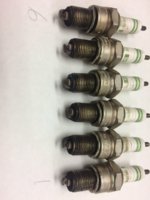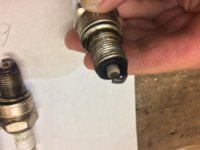I have a rich running issue, not terrible, but my coupe won't idle well in traffic (on a stop at the lights the idle starts off lumpy, gets lumpier and eventually stalls). I did a CO check but couldn't get the CO level in spec, even with the mixture screw (on the ECU) turned to max lean.
I've now checked the system from the ECU plug wiring and have some ideas, and wanted to get some expert input before I start taking things apart.
Looks to be no problem with the wiring: grounds and power all check out. As do the injectors (electrically, not checked flow or pattern or leakage), the fuel pump and the TPS. The MAP sensor also checks out fine (electrically at least)
I came up with some options to test for:
- Leak on MAP sensor, or the hose to it (reads low manifold vac and so over fuels)
- Leaky injectors (over fuelling)
- Blocked coolant lines near coolant temp sensor
- Coolant temp sender fault
- Air temp sender fault
- Fuel pressure high , i.e. fault with FPR
With the engine running I took some temp readings with a non contact thermometer, this indicated that the engine was running at 75C (167F) but that the coolant temp sender was only 50-55C (130F). So I think I might have a blocked coolant line around the coolant temp sender. I found a good thread about on this (I'll post a link when I find it again) and it sounds like a weekend's work to strip this down, clean and rebuild.
I'll test out the 'stat and the temp sender also.
Question: the thermo time switch, i know this controls the cold start injector, but how does it work? I read that it is also electrically heated, but there are only two wires going to it
I'll update this post, and move on to testing fuel pressure etc.
I've now checked the system from the ECU plug wiring and have some ideas, and wanted to get some expert input before I start taking things apart.
Looks to be no problem with the wiring: grounds and power all check out. As do the injectors (electrically, not checked flow or pattern or leakage), the fuel pump and the TPS. The MAP sensor also checks out fine (electrically at least)
I came up with some options to test for:
- Leak on MAP sensor, or the hose to it (reads low manifold vac and so over fuels)
- Leaky injectors (over fuelling)
- Blocked coolant lines near coolant temp sensor
- Coolant temp sender fault
- Air temp sender fault
- Fuel pressure high , i.e. fault with FPR
With the engine running I took some temp readings with a non contact thermometer, this indicated that the engine was running at 75C (167F) but that the coolant temp sender was only 50-55C (130F). So I think I might have a blocked coolant line around the coolant temp sender. I found a good thread about on this (I'll post a link when I find it again) and it sounds like a weekend's work to strip this down, clean and rebuild.
I'll test out the 'stat and the temp sender also.
Question: the thermo time switch, i know this controls the cold start injector, but how does it work? I read that it is also electrically heated, but there are only two wires going to it
I'll update this post, and move on to testing fuel pressure etc.
Last edited:



